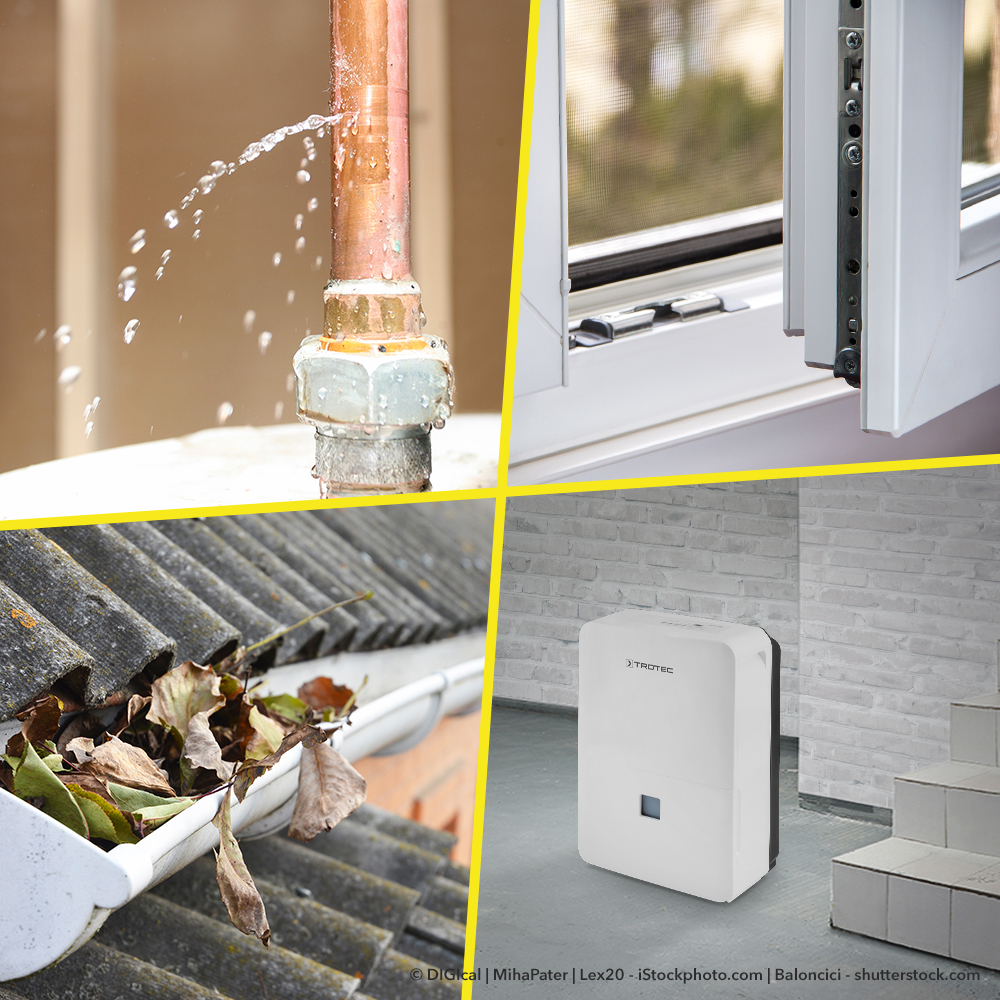 Lots of people are probably familiar with the peculiar musty and mouldy smell that emanates from a damp basement. But stale air is not just a problem for sensitive noses. The damp also produces mould that poses a risk to health and this means that a damp basement becomes a real health risk. Since no one needs this in their own house, you can find tips here to identify and eliminate the most common causes of damp basements.
Lots of people are probably familiar with the peculiar musty and mouldy smell that emanates from a damp basement. But stale air is not just a problem for sensitive noses. The damp also produces mould that poses a risk to health and this means that a damp basement becomes a real health risk. Since no one needs this in their own house, you can find tips here to identify and eliminate the most common causes of damp basements.
There are many possible causes for a damp basement. The simplest way to perform a search is to systematically go through our tips and tick off what is definitely not the cause. If nothing at all applies, you might want to call in a building surveyor. They willcarry out a site inspection and a problem analysis without pursuing their own economic interests. The Verband privater Bauherren (VPB – Association of Private Builders), the TÜV or the consumer advice centres will be happy to help you with contacting independent specialists.
-
Tip: Check water pipes in the building
A frequent reason for a damp basement: a leaking water pipe continually wetting the wall or the ceiling. This problem can usually be eliminated quickly and at an affordable price – at least if no wall needs to be pried open to get to the leaking pipe.
-
Tip: Correct ventilation
Incorrect ventilation can lead to excessive dampness in the basement rooms. This is why you should never ventilate your basement during the day when the outside temperature is high. The warm air retains more moisture than cold air. As air in the basement cools down in the evening, the moisture condenses on the cool wall – in the worst case scenario, the walls can even become wet, rather than just damp!
-
Tip: Check horizontal sealing
A horizontal barrier against moisture levels from the ground is usually placed between the first two rows of stones when the house is built. The barrier usually consists of a film, roofing felt or a stainless steel sheet. This horizontal sealing is missing time and time again, especially in older buildings. It can be subsequently added, for example, by splitting open the brickwork in some places on the inside or outside and inserting sheets.
-
Tip: Check the protective coating
Since protective coatings do not last forever, there is also a risk of moisture penetrating vertically. For example, bitumen, the well-known black seal for basement tanking, breaks down after around 30 to 40 years. Unfortunately, this is usually very expensive since renewing the seal requires a huge amount of effort. The outer walls around the house must be dug up right down to the floor and resealed again.
-
Tip: Have drains serviced
If water gets in through the light shafts of basement windows when there are high ground water levels or intensive rainfall does not drain away, this is often due to drains missing or being overloaded. For this reason, TÜV experts recommend having the drains serviced and rinsed by a specialist every ten years to ensure long-lasting, optimal performance.
-
Tip: Inspect the roof drain
If a damp spot continually appears in a corner of the basement, this may be due to a blocked roof drainage system on the wall of the building. As a result, rainwater running off in the gutter accumulates and eventually pushes through the wall. Therefore, gutters and downspouts should be kept clear at all times. And if damp spots have already formed on the walls, you should consider using a dehumidifier to prevent any consequential damage.
-
Tip: Use a dehumidifier
The best way to provide protection against damp is to continually use a dehumidifier to ensure a dry basement. Take a look at Trotec’s extensive range or products: Here you can find incredibly cost-effective dehumidifiers with optimum performance and size, in timeless to modern designs and perfectly matched to meet your individual needs – now in the Trotec shop!

